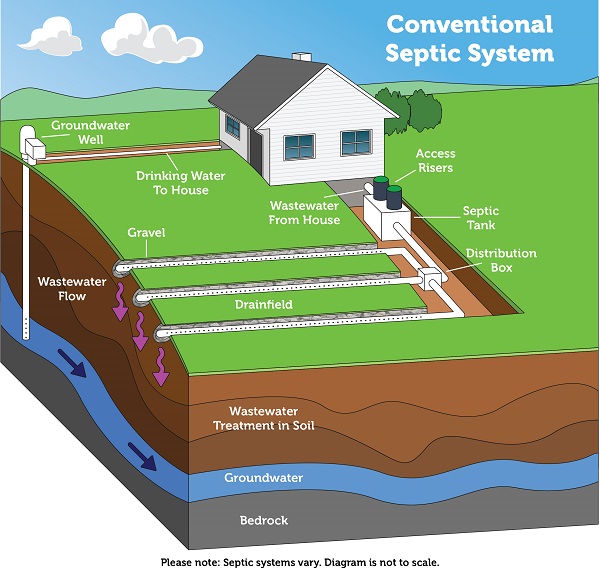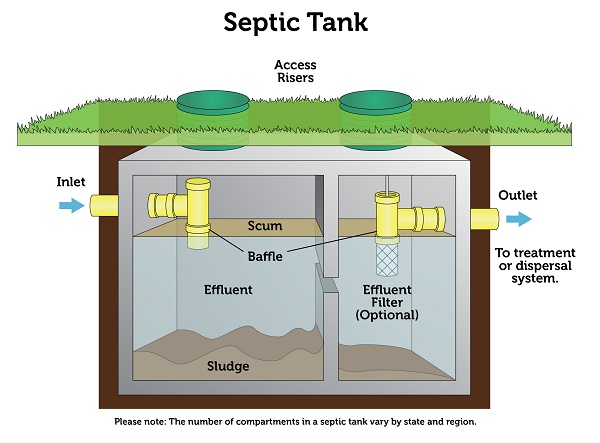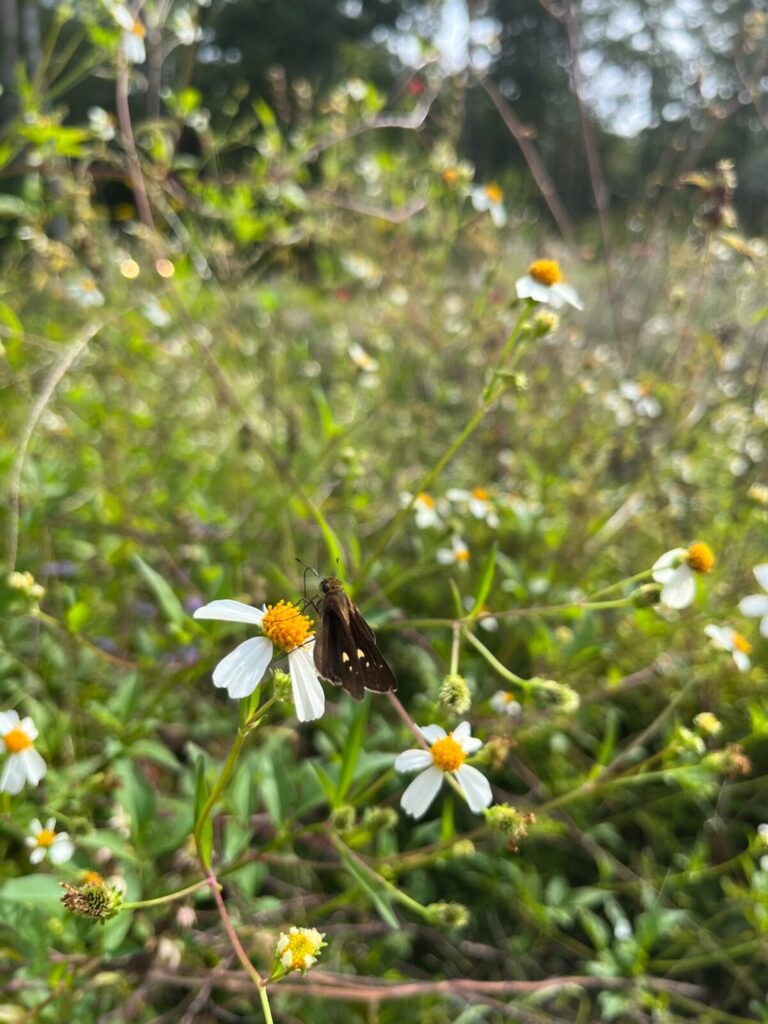What a crazy notion! While it may sound crazy to start off with Poop of all things, we are addressing the age-old concern “what can I plant on my septic drainfield?”
How Does a Septic System Work
Crash course here:
Septic systems collect and treat household wastewater. They have three main components: the tank, the drain lines, and the drainfield.
- Tank – Wastewater flows into the tank, where it separates into three layers:
- Sludge (solids) settles at the bottom
- Scum (fats and oils) floats on top
- “Clear” water stays in the middle
- Drain Lines – The partially treated water flows from the tank into underground pipes that carry it to the drainfield.
- Drainfield – This is the area where the water is further filtered naturally by the soil. Microbes, bacteria, and earthworms in the soil help break down any remaining waste.
Eventually, the treated water seeps into the groundwater, completing a natural filtration process.
( A Beginner’s Guide to Septic Systems, Bulletin 1421)


Factors That Can Damage Your Septic System
We all want the best for our property, but it’s easy to forget about the septic system since it’s out of sight underground. Unfortunately, a failing system can cause serious damage—especially to your pocketbook.
To keep your septic system working properly, avoid these common mistakes:
- Digging too deeply or using a rototiller
These activities can damage underground drainpipes. - Driving or parking on the drainfield
Heavy vehicles can cause soil compaction, crush pipes, or even get stuck in wet ground. - Installing raised beds, vegetable gardens, rain gardens, or ponds over the drainfield
These can trap excess moisture in the soil, reducing the system’s ability to function. Poor drainage in saturated soil leaves wastewater with nowhere to go. - Planting trees or other plants with aggressive, spreading roots
Roots can invade and clog drainpipes as they search for water and nutrients.
Pro Tip:
When planting woody ornamentals, keep them at least a distance equal to their mature height away from the drainfield (this info is usually on the plant tag). Doubling or even tripling that distance is even better.
What to Avoid
Plants to Avoid Over or Near Septic Systems
- Woody ornamentals (shrubs and trees):
These plants have deep or spreading root systems that can invade and damage drainpipes. - Water-demanding or “thirsty” plants:
Plants that require frequent irrigation can oversaturate the soil, reducing the septic system’s ability to function properly. - Frequently rotated crops (like annuals and seasonal vegetables):
Constant digging and soil disturbance can harm underground components of the system. - Fruits and vegetables:
Growing edible plants over a drainfield poses a risk of contamination from harmful bacteria like E. coli and other coliforms. - Dense, mat-forming groundcovers:
These plants can limit air and water movement in the soil, interfering with the natural filtration process.
What Can You Plant Over a Septic Drainfield?
If you want to add greenery while protecting your septic system, choose plants that are safe, low-impact, and beneficial to the environment. Here are some great options:
- Annuals, perennials, and turfgrass
Turfgrass is the usual option for drainfields. Annuals and Perennials are generally safe when planted between drain lines to avoid disturbing pipes. - Plants with small, shallow root systems
Shallow roots are less likely to interfere with drainpipes. - Low-maintenance and drought-tolerant species
These reduce the need for watering and upkeep, which helps keep the soil from becoming too saturated. - Plants you wouldn’t mind removing
If the system ever needs maintenance, it’s best to avoid planting anything you’d hate to dig up.
And here’s our favorite tip:
🌼 Pollinator-friendly native plants
The Georgia Green Landscape Stewards Team recommends planting native species that support pollinators. Most native plants behave like perennials—either coming back from roots or reseeding naturally each year. They’re beautiful, eco-friendly, and septic-safe when used thoughtfully.
Planting with care not only protects your septic system—it supports a healthier landscape for both people and wildlife.

Help and Resources
Need Help Getting Started?
While we’d love to hand you a ready-made landscape plan, the truth is—there’s no one-size-fits-all solution. Each of us has a different vision of the “perfect” pollinator habitat. We all have unique preferences for plant color, texture, and design—and let’s not forget, different landscaping budgets.
To help you begin your journey, we’ve compiled a list of helpful resources below. These tools can guide your decisions, inspire ideas, and show you real-life examples of how to bring pollinator-friendly landscaping to life in your own yard.
If you need help understanding any of the resources or want guidance as you get started, contact your local Agriculture and Natural Resources Agent by calling 1-800-ASK-UGA1 (1-800-275-8421).
We’re here to help!
- A Beginner’s Guide to Septic Systems, Bulletin 1421
- Ornamental Plantings on Septic Drainfields, Circular 1030
- Drawing a Landscape Plan, Circular 1032-4
- Homegrown National Park
- Eco-Friendly Garden: Attracting Pollinators, Beneficial Insects, and Other Natural Predators, Bulletin 1456
- Native Plants for Georgia Part III: Wildflowers, Bulletin 987-3
- Pollinator Plants of the Year, State Botanical Garden of Georgia
- Georgia Native Nurseries and Seed Distributors, State Botanical Garden of Georgia